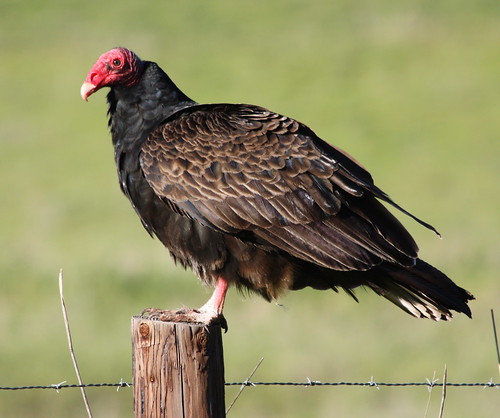And subscribe to MinuteEarth! http://goo.gl/EpIDGd
As we try to figure out the evolutionary trees for languages and species, we sometimes get led astray by similar but unrelated words and traits.
Thanks to our Patreon patrons https://www.patreon.com/MinuteEarth and our YouTube sponsors.
___________________________________________
To learn more, start your googling with these keywords:
Cladistics: A method of recreating evolutionary trees based on evidence about relationships.
Etymology: The study of the origin of words and how they have changed throughout history.
Convergent Evolution: A process whereby different species evolve similar traits in order to adapt to similar environments.
Polyphyly: A group containing members with multiple ancestral sources.
Homoplasy: A trait shared by a group of species that is not shared in their common ancestor.
False Cognates: Pairs of words with similar sounds and meanings but unrelated etymologies.
___________________________________________
If you liked this week’s video, you might also like:
A photographer who has taken amazing photos of unrelated people who look alike: http://mentalfloss.com/article/53774/photos-unrelated-people-who-look-exactly-alike
_________________________________________
Support us on Patreon: https://goo.gl/ZVgLQZ
And visit our website: https://www.minuteearth.com/
Say hello on Facebook: http://goo.gl/FpAvo6
And Twitter: http://goo.gl/Y1aWVC
And download our videos on itunes: https://goo.gl/sfwS6n
___________________________________________
Credits (and Twitter handles):
Script Writer: David Goldenberg (@dgoldenberg)
Script Editor: Emily Elert (@eelert)
Video Illustrator: Jessika Raisor
Video Director: David Goldenberg, Emily Elert
Video Narrator: Emily Elert
With Contributions From: Henry Reich, Alex Reich, Kate Yoshida, Ever Salazar, Peter Reich
Music by: Nathaniel Schroeder: http://www.soundcloud.com/drschroeder
Image Credits:
Lappet-faced Vulture (Old World) – Steve Garvie
https://commons.wikimedia.org/wiki/File:Torgos_tracheliotos_-Masai_Mara_National_Reserve,_Kenya-8.jpg
Turkey vulture (New World) – Flickr User minicooper93402

Crested Porcupine (Old World) – Flickr user 57777529@N02
https://www.flickr.com/photos/57777529@N02/5398915634
North American Porcupine (New World) – iStock.com/GlobalP
https://www.istockphoto.com/photo/north-american-porcupine-or-canadian-porcupine-or-common-porcupine-walking-gm515605852-88578399
Chinchilla lanigera – Nicolas Guérin
https://commons.wikimedia.org/wiki/File:Chinchilla_lanigera_(Wroclaw_zoo)-2.JPG
Naked Mole Rat – Roman Klementschitz
https://commons.wikimedia.org/wiki/File:Nacktmull.jpg
Ganges river dolphin – Zahangir Alom, NOAA (Public Domain)
https://commons.wikimedia.org/wiki/File:Platanista_gangetica_noaa.jpg
Atlantic Spotted Dolphin – Flickr user 53344659@N05

Orcinus orcas – Robert Pittman, NOAA (Public Domain)
https://commons.wikimedia.org/wiki/File:Killerwhales_jumping.jpg
Euphorbia obesa – Frank Vincentz
https://en.wikipedia.org/wiki/File:E_obesa_symmetrica_ies.jpg
Astrophytum asterias – David Midgley
https://en.wikipedia.org/wiki/File:Astrophytum_asterias1.jpg
Sweet William Dwarf – Nicholas M. Bashour
https://en.wikipedia.org/wiki/File:Spring_Flowers.JPG
___________________________________________
References:
Atkinson, Q. and Gray, R. (2005). Darimont, C., Fox, C., Bryan, H., and Reimchen, C. (2015). Curious Parallels and Curious Connections — Phylogenetic Thinking in Biology and Historical Linguistics. Systematic Biology. 54:5 (513-526). Retrieved from: https://academic.oup.com/sysbio/article/54/4/513/2842862
Atkinson, Quentin. (2018). Personal Communication. Department of Evolution and Human Behavior at the University of Auckland.
Bennu, D. (2004). The Evolution of Birds: An Overview of the Avian Tree of Life. Lab Animal. 33 (42-28)). Retrieved from: https://www.nature.com/articles/laban0504-42
De La Fuente, J.(2010). Urban legends: Turkish kayık ‘boat’ and “Eskimo” qayaq ‘kayak’. Studia Linguistica. 127 (7-24). Retrieved from: http://www.ejournals.eu/Studia-Linguistica/2010/2010/art/180/
